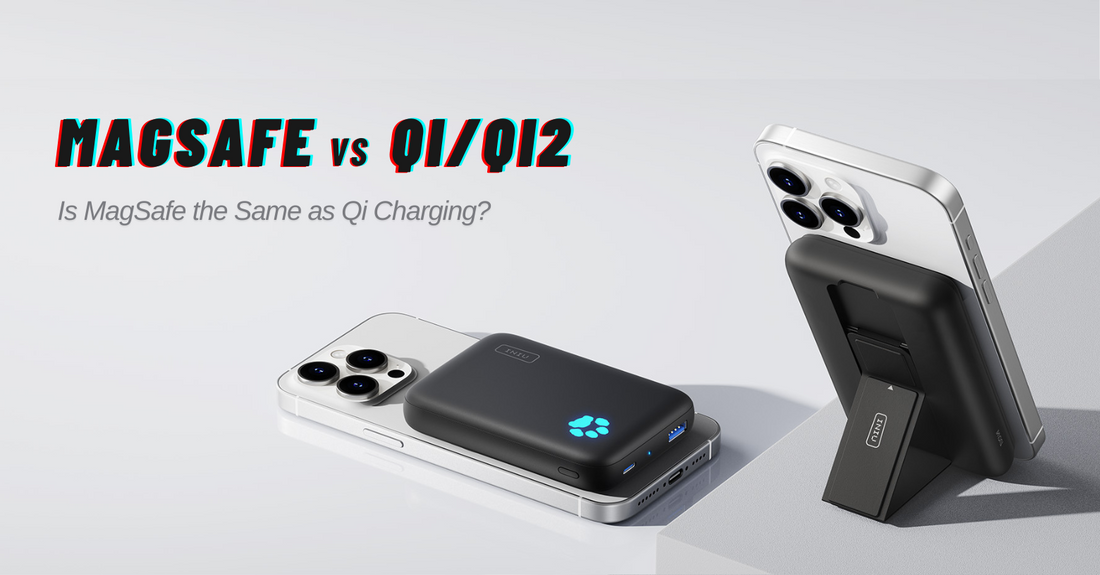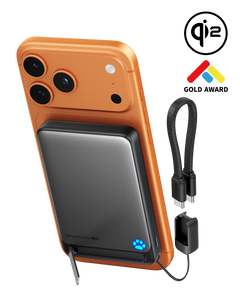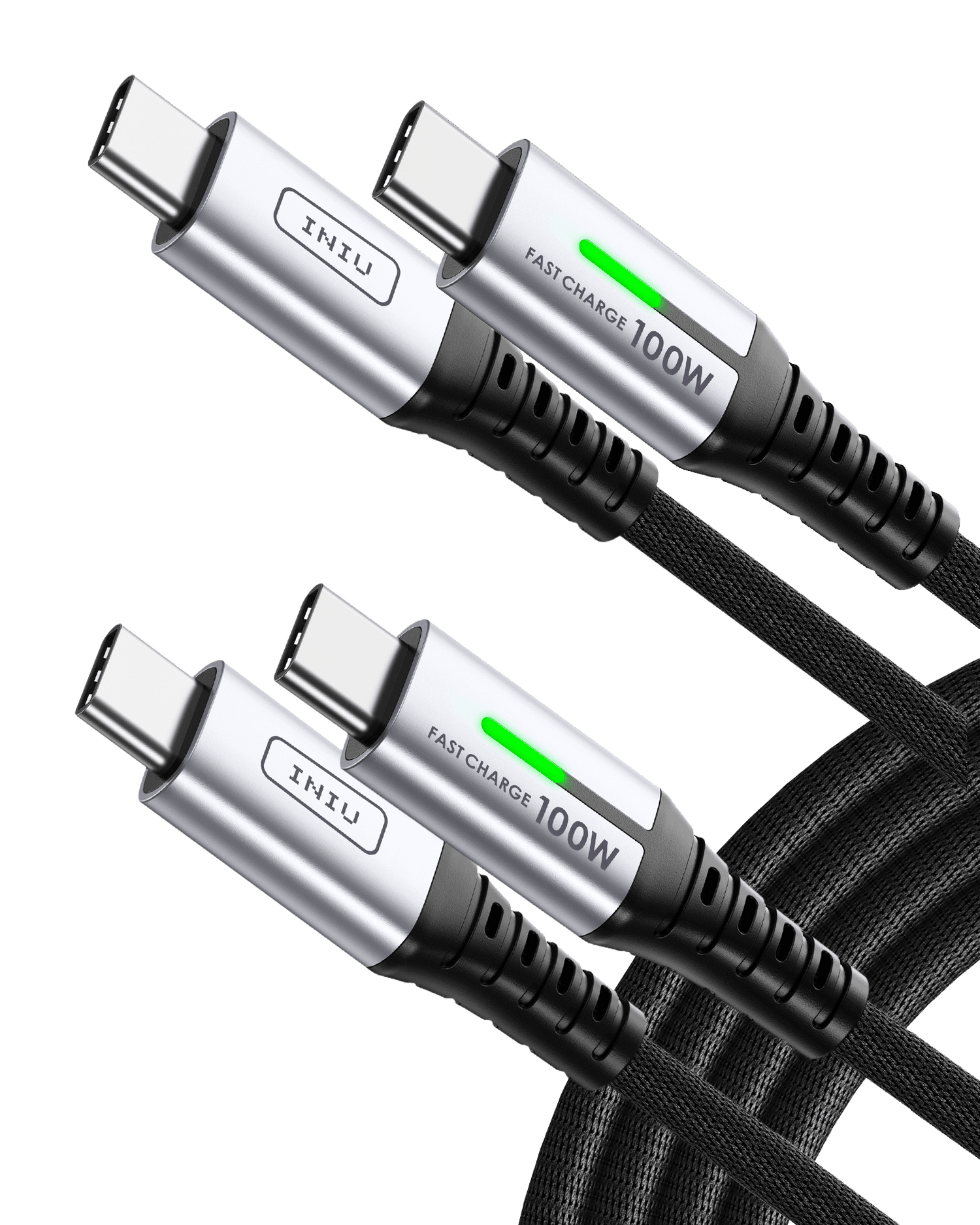
MagSafe vs Qi: Is MagSafe the Same as Qi Charging?
Wireless charging has become a standard feature in modern tech devices, offering a cleaner and more convenient charging experience. Among the most popular wireless charging technologies are MagSafe and Qi, each with its unique characteristics. However, for many consumers, understanding the differences between the two can be confusing.
This article delves into the key distinctions, compatibility, and use cases for both MagSafe and Qi wireless charging, helping you make an informed choice.
What is MagSafe Charging?
MagSafe charging is a proprietary wireless charging technology developed by Apple. First introduced in the iPhone 12, MagSafe chargers utilize magnets to align the device perfectly with the charging pad. This ensures precise placement, which is a significant improvement over traditional wireless charging.
The primary advantage of MagSafe over standard wireless charging is its ability to deliver stable, high-speed power. MagSafe chargers can provide up to 15W of power to compatible iPhones, making it a faster charging solution for Apple devices like the iPhone 12 and newer models, Apple Watch, and AirPods Pro.
What is Qi Wireless Charging?
Qi is the most widely adopted standard for wireless charging, developed by the Wireless Power Consortium (WPC). Qi technology uses electromagnetic induction to charge devices, meaning the charging pad and the device don’t need to be precisely aligned.
The evolution of Qi technology has led to the introduction of Qi2 wireless charging, designed to offer enhanced speeds and improved cross-device compatibility.
What is Qi2 and Is It Compatible with Qi?
Qi2 wireless charging represents a significant upgrade to the traditional Qi standard, focusing on greater efficiency and broader cross-brand compatibility. A key feature of Qi2 is its integration of a magnetic power profile, similar to Apple's MagSafe, which ensures optimal alignment and more efficient power transfer.
Most devices that support the original Qi wireless charging are also compatible with Qi2. This means Qi2 chargers can power a wider array of devices, including newer Android smartphones (like Samsung and Google Pixel), wireless earbuds (such as AirPods and Galaxy Buds), and smartwatches. Importantly, Qi2 is backward compatible with Qi devices, so you can seamlessly use a Qi2 charger with your existing Qi-enabled gadgets without any compatibility concerns.
What is the Difference Between MagSafe and Qi Wireless Charging?
| FEATURES | MAGSAFE | QI | QI2 |
| Charging Speed | Up to 15W | From 5W to 15W | Up to 15W |
| Alignment | Magnetic alignment | Electromagnetic induction | Magnetic technology similar to MagSafe |
| Efficiency | High | Average | High |
| Case Compatibility | Magsafe compatible cases | Variety of cases | Variety of cases |
| Device Compatibility | iPhone 12 and later, AirPods Pro, and Apple Watch | Android smartphones (Samsung, Google Pixel, etc.), wireless earbuds, and smartwatches | Android smartphones (Samsung, Google Pixel, etc.), wireless earbuds, and smartwatches |
| Compatibility with Newer Standards (Qi2) | Not fully integrate with Qi2 | / | Fully backward compatible with Qi |
Do you have a specific device in mind you're looking to charge wirelessly?
FAQ About MagSafe And Qi
Q1: What devices are compatible with MagSafe charging?
A1: MagSafe charging is primarily compatible with Apple devices, including iPhone 12 and later models, AirPods Pro, and Apple Watch.
Q2: What devices are compatible with Qi wireless charging?
A2: Qi wireless charging is a widely adopted standard compatible with a vast array of devices, including most Android smartphones (like Samsung and Google Pixel), wireless earbuds (such as AirPods and Galaxy Buds), and smartwatches.
Q3: Is Qi2 compatible with MagSafe devices?
A3: Qi2 is designed to be backward compatible with Qi, and devices that support MagSafe charging generally work with Qi2 chargers. However, the full magnetic alignment benefits of MagSafe might not be fully utilized unless the Qi2 charger explicitly supports that magnetic alignment feature.
Q4: Can I use a MagSafe charger with an Android phone?
A4: Generally, a dedicated MagSafe charger will not magnetically attach or provide optimal charging speeds to an Android phone, as MagSafe's magnetic system is proprietary to Apple. However, many Android phones support the standard Qi wireless charging, so a Qi-compatible part of the MagSafe charger might still charge it, but without magnetic alignment or optimized speed.
Q5: Is MagSafe more efficient than Qi?
A5: MagSafe is generally considered more efficient for compatible Apple devices, mainly due to its magnetic alignment, which ensures consistent and optimal power transfer up to 15W. Standard Qi charging can have varying efficiency based on device placement, but Qi2 aims to bridge this gap with magnetic alignment, offering high efficiency similar to MagSafe.
Q6: Do I need a special case for MagSafe or Qi2 charging?
A6: For MagSafe, a MagSafe-compatible case is recommended to ensure proper magnetic alignment and attachment. For standard Qi and Qi2 charging, most non-metallic cases are compatible. Qi2's magnetic profile can benefit from cases designed for it, but it's not strictly necessary for basic charging.
Q7: Which wireless charging standard should I choose?
A7: Your choice largely depends on your device ecosystem. If you primarily use Apple devices (iPhone 12 or newer, Apple Watch, AirPods Pro), MagSafe offers the fastest and most stable charging experience. If you use a mix of Android devices, wireless earbuds, or other Qi-enabled gadgets, Qi is the universal standard. Qi2 is emerging as a versatile solution that combines the universality of Qi with the magnetic alignment benefits of MagSafe, making it a strong future-proof choice.






